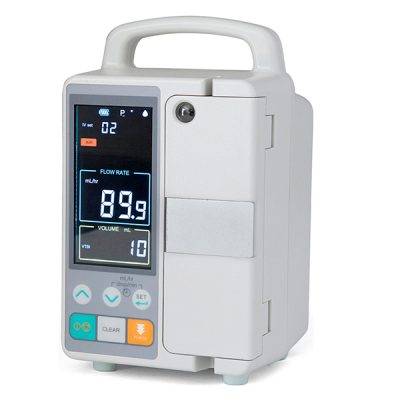Project Report For Infusion Pump
Introduction
Project Report For Infusion Pump is as follows.
A hospital infusion pump is a device that aids in the infusion of fluids into a patient’s body while closely monitoring the process. With the progress of infusion pumps via numerous generations, several infusion pumps are now accessible for diverse purposes and in various medical settings.
The infusion pump is designed to provide big or little amounts of nutrition and drugs. Antibiotics, insulin and other hormones, chemotherapeutic treatments, and pain relievers are among the pharmaceuticals administered. Infusion pumps are unusual in that they are built for stationary use next to the patient’s bed.
An ambulatory infusion pump is a tiny and portable type of infusion pump. They can also generate extremely high but regulated pressures, and inject controlled volumes of fluids subcutaneously (under the skin) or epidurally (just beneath the surface of the central nervous system – a highly popular local spinal anaesthesia for birthing).

Types Of Infusion Pump
- Ambulatory Infusion Pumps :- This is the inverse of the stationary infusion pumps. Ambulatory infusion pumps are portable and can be used at home. Because severe disorders necessitate medicine throughout the day, infusion pumps are frequently employed in their treatment. These patients can be transferred while getting medication using mobile and light infusion pumps. This type of portable infusion pump overcomes the problem of administering medicinal infusions while on the go.
- Stationary Infusion Pumps :- These pumps are designed to be put near to the patient’s bed. Because stationary infusion pumps do not require movement, they do not need to be small or light. Many of the individuals who utilise them have severe or chronic conditions. Bedridden patients with chronic illnesses may require pharmaceutical or nutritional infusions. Patients who require frequent bedside feeding or medicine can benefit from bedside IV infusions provided by stationary pumps.
- Large Volume Infusion Pump :- It is used to inject massive volumes of fluids into the body of the patient. Typically, this type of pump is used to give nutrients to the patient. These pumps are operated manually or by a computer-controlled roller mechanism to sequentially press the rubber tube, allowing the medication to flow at various speeds depending on the patient’s needs.
- Syringe Pumps or Small Volume Infusion Pumps :- These are infusion pumps that give tiny pharmaceutical volumes for medications that must be administered in little amounts, such as hormones. It directs the motor mechanism that forces the drug through the syringe and into the tube that delivers it to the patient.
Get Completely Custom Bankable Project Report
Market Potential of Infusion Pump
The market for infusion pumps was valued at USD 13 billion in 2022, and by 2030, it is anticipated to grow to USD 24.6 billion. From 2022 to 2030, the market for infusion pumps is anticipated to expand at a CAGR of 8.3%.
Infusion pumps are used to deliver medications, hormones, and nutritional liquids into the circulatory system in regulated volumes through veins. In clinical settings such as hospitals, nursing homes, and residences, intravenous infusion pumps are widely used. A skilled operator controls the pump by configuring the rate and duration of fluid supply using built-in software. Nutrients, hormones, antibiotics, chemotherapeutic medications, and pain relievers can all be delivered by intravenous infusion pumps.
In 2022, infusion pumps had the biggest market share of 16.8%. Volumetric infusion pumps, syringe infusion pumps, insulin infusion pumps, enteral infusion pumps, mobile infusion pumps, patient-controlled analgesia infusion pumps, and implantable infusion pumps are the product segments of the intravenous infusion pump market. Volumetric infusion pumps had the biggest market share in 2022 because they can provide continuous and precise volumes of fluids at very slow to very rapid rates.
These pumps are commonly used for nutrition and drug administration. Other pumps, such as patient-controlled analgesia (PCA) pumps, insulin pumps, and smart pumps, will contribute to the segment’s additional growth. Rising demand for enteral and syringe pumps is leading to a growing desire for intravenous infusion pumps, which will also drive industry growth.

